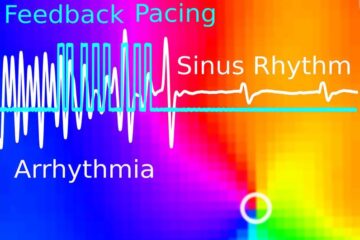A taxing issue: How human T-lymphotropic virus type-1 causes leukaemia

HTLV-1 is a retrovirus that causes adult T-cell leukaemia/lymphoma (ATLL). A single protein made by the virus, Tax, is thought to be enough to trigger cancer development. Tax has a number of effects in the cell, including promoting inappropriate cell division, repressing DNA repair mechanisms and causing genomic instability. These effects are thought to combine and cause cancer, although the exact details of the process are unclear.
James Bogenberger and Paul Laybourn from Colorado State University, USA found that the levels of histone proteins and histone transcripts were lower in T-cell lines infected with HTLV-1 than in uninfected cell lines. They also showed that Tax could cause a drop in the levels of histone transcript in uninfected cells.
Histone proteins are required for the packaging of DNA in cell nuclei and are involved in many key processes associated with DNA, including transcription, repair and replication. The authors suggest that Tax uncouples cell division and replication-dependent histone gene expression, allowing cell division to continue while the levels of histone protein fall.
They write: “We suggest Tax repression of replication-dependent histone gene expression will result in reactivation of viral gene expression, deregulation of cellular gene expression and genomic instability. All of these effects may contribute to the development of adult T-cell leukemia/lymphoma. To our knowledge, this is the first example of a reduction of histone levels correlating with viral infection and cancer development.”
Media Contact
All latest news from the category: Life Sciences and Chemistry
Articles and reports from the Life Sciences and chemistry area deal with applied and basic research into modern biology, chemistry and human medicine.
Valuable information can be found on a range of life sciences fields including bacteriology, biochemistry, bionics, bioinformatics, biophysics, biotechnology, genetics, geobotany, human biology, marine biology, microbiology, molecular biology, cellular biology, zoology, bioinorganic chemistry, microchemistry and environmental chemistry.
Newest articles

Wildfire danger to increase due to climate change
WSL Institute for Snow and Avalanche Research (SLF) researchers expect an elevated wildfire danger in the Alpine Foreland from 2040 onwards due to changing meteorological conditions. The danger currently remains…

Advanced Brain Science Without Coding Expertise
Researchers at Helmholtz Munich and the LMU University Hospital Munich introduce DELiVR, offering a new AI-based approach to the complex task of brain cell mapping. The deep learning tool democratizes…

Gentle defibrillation for the heart
Using light pulses as a model for electrical defibrillation, Göttingen scientists developed a method to assess and modulate the heart function. The research team from the Max Planck Institute for…





















